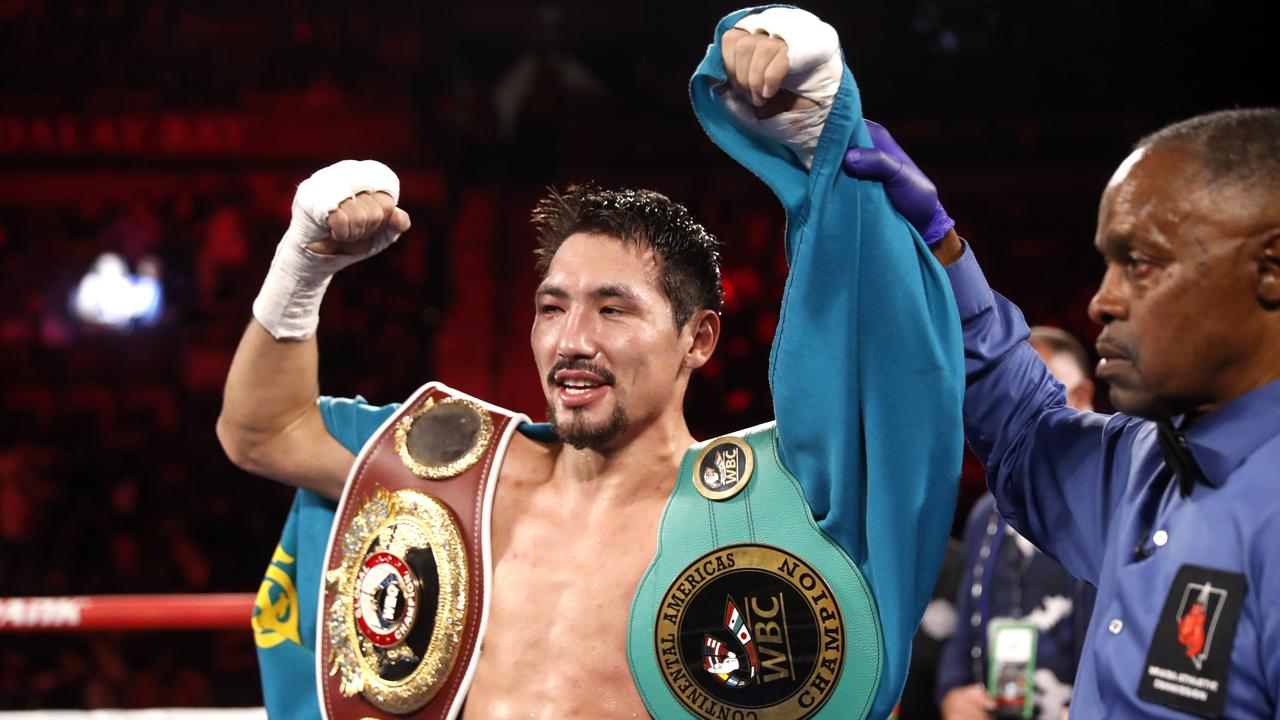After decades of rising economic integration, the global economy is fragmenting. What can Australia do about it?

- by Admin
- April 20, 2024
Prime Minister Anthony Albanese made an important speech two weeks ago.
He said “strategic competition” had become a fact of life.
He warned major advanced economies were pouring trillions of dollars into their industrial bases and manufacturing capability, and many nations were drawing explicit links between their economic security and national security.
“We need to be clear-eyed about the economic realities of this decade,” he told Australians.
And to understand what he meant, you only need to look around.
The world’s economy is fragmenting
In March, a fascinating paper was published with the title, Are We Fragmented Yet? Measuring Geopolitical Fragmentation and its Causal Effects.
It was written by Jesús Fernández-Villaverde (Professor of Economics at the University of Pennsylvania), Tomohide Mineyama (International Monetary Fund), and Dongho Song (Johns Hopkins University).
It looked at the current state of world economic integration and presented its data in a single “geopolitical fragmentation index”.
That index is in the image below.
Notice how the blue line starts falling from the mid-1990s?
That reflects how, at that point in history, the global economy was becoming more and more integrated — signalling an “upward trajectory in globalisation”.
That coincided with the collapse of the Soviet Union in the early 1990s, the creation of the European Union in 1993, the implementation of the North American Free Trade Agreement (NAFTA) in 1994, the formation of the World Trade Organization (WTO) in 1995, and China’s entry into the WTO in 2001.
But that trend changed after the global financial crisis of 2007-09.
And from the mid-2010s, following the European Debt Crisis and Arab Spring, the world economy was fragmenting.
And the fragmentation has continued apace, increasing to its highest level in recent years “without any indication of reversal”.
“Brexit, the US-China trade war, the COVID-19 pandemic, Russia’s invasion of Ukraine, and the Gaza-Israel conflict, among other events, have strained international relations and have forced many policymakers to rethink the future of their nations’ economic strategies,” the paper says.
“Similarly, firms are re-evaluating how they operate in a context of increasing geopolitical and trade complexities,” it says.
The paper has added to a growing literature on geopolitical fragmentation.
In December last year, IMF First Managing Deputy Director Gita Gopinath warned that “geo-economic fragmentation” was “increasingly a reality”.
“If fragmentation deepens, we could find ourselves in a new Cold War,” she said.
“Yet, even in this new geopolitical reality, policymakers can seek solutions that minimise the costs of fragmentation.
“The focus should be on pragmatic approaches that preserve the benefits of free trade to the extent possible, safeguard solving global challenges, while achieving domestic goals of security and resilience.”
Europe’s plans for strategic competition
And then there’s Europe.
Mario Draghi, the former president of the European Central Bank, is currently working on a plan to revitalise the European Union’s economy in the face of stiff competition from the United States and China.
And he gave an important speech last week, in Brussels, that revealed how his ideas were shaping up.
Here’s how he started it:
“For a long time, competitiveness has been a contentious issue for Europe,” he said.
“In 1994, the Nobel-prize-to-be economist Paul Krugman called focusing on competitiveness a ‘dangerous obsession’. His argument was that long-term growth comes from raising productivity, which benefits everyone, rather than through trying to improve your relative position against others and capture their share of growth.
“The approach we took to competitiveness in Europe after the sovereign debt crisis seemed to prove his point.
“We pursued a deliberate strategy of trying to lower wage costs relative to each other – and, combine this with a procyclical fiscal policy, the net effect was only to weaken our own domestic demand and undermine our social model.”
Sorry?
So the misery and waste that resulted from the austerity policies that Europe’s leaders forced on their people after the EU’s sovereign debt crisis?
Yeah, that was a mistake.
What policymakers should have done instead, in response to their debt crisis, was get EU member states to work together, rather than compete against each other, to improve the region’s economic health as a unit.
Oops.
But Mr Draghi said an important lesson had been learned from that mistake, and he’ll soon be proposing “radical change” to the EU so it can meet the new challenges thrown up by our rapidly shifting geopolitical environment.
You can watch his speech below, if you’re interested.
In his speech, he noted that strategic competition was on the rise.
He warned the EU’s member states would have to work together this time, and move quickly, to secure a place for themselves in the future global order.
“The world is changing rapidly and it has caught us by surprise,” he conceded.
“Most importantly, other regions are no longer playing by the rules and are actively devising policies to enhance their competitive position. At best, these policies are designed to re-direct investment towards their own economies at the expense of ours; and at worst, they are designed to make us permanently dependent on them.
“China, for example, is aiming to capture and internalise all parts of the supply chain in green and advanced technologies and is securing the access to the required resources. This rapid supply expansion is leading to significant overcapacity in multiple sectors and threatening to undercut our industries.
“The US, for its part, is using large-scale industrial policy to attract high-value domestic manufacturing capacity within its borders – including that of European firms – while using protectionism to shut out competitors and deploying its geopolitical power to re-orient and secure supply chains,” he said.
He said the EU currently lacked a strategy for how to keep pace in an “increasingly cutthroat race” for leadership in new technologies.
He said if the EU wanted to achieve its climate ambitions without increasing its dependence on countries “on whom we can no longer rely”, it would need a comprehensive strategy covering “all stages of the critical mineral supply chain.”
“We are currently largely leaving this space to private actors, while other governments are directly leading or strongly coordinating the whole chain,” he warned.
“We need a foreign economic policy that delivers the same for our economy.
“The European Commission has already started this process with the Critical Raw Materials Act, but we need complementary measures to make our targets more tangible. For example, we could envisage a dedicated EU Critical Mineral Platform, primarily for joint procurement, secure diversified supply, the pooling and financing, and stockpiling,” he said.
In short, Mr Draghi said the European Union’s economy would have to be transformed.
“We need to be able to rely on decarbonised and independent energy systems; an integrated and adequate EU-based defence system; domestic manufacturing in the most innovative and fast-growing sectors; and a leading position in the deep-tech and digital innovation that is close to our manufacturing basis,” he said.
“But with our competitors moving fast, we must also assess priorities.
“Immediate actions are needed in the sectors with the highest exposure to green, digital and security challenges.”
‘What price your sneer?’
And as more countries assert their right to restructure their economies to adapt to a rapidly changing global system, we had a reminder last week of how once-mighty countries can be mocked for their poor decision-making.
A couple of days ago, the Economist published an article on some upcoming changes to Singapore’s government.
It noted that Singapore’s prime minister, 72-year old Lee Hsien Loong, will be resigning next month after 20 years in power, and he’ll be handing the baton to Lawrence Wong, the current finance minister.
It said in Singapore’s 59-year history the Republic had only had three leaders, so Mr Wong would be its fourth.
It said after Mr Wong’s swearing-in as prime minister, he would soon call a general election, likely later this year.
And it predicted Mr Wong’s People’s Action Party (PAP) would win that election, like it always does.
It summed things up this way.
“The PAP will win thanks to formidable organisation, unrelenting attacks on the opposition, a docile press, a record of good governance, and a not-always-subliminal message that its survival and that of Singapore are synonymous,” it declared.
But the article annoyed Singapore Home Affairs and Law Minister K Shanmugam, who responded by posting some acerbic thoughts on his Facebook page.
They’re worth a read.
“The Economist can’t resist sneering at us,” Mr Shanmugam wrote.
“It’s an instinct lodged deep in the unconscious of the British commentariat class. They can’t stand that a people they were accustomed to lecturing are now doing better than they are, across the board.
“Take governance: Deputy Prime Minister Lawrence will be our 4th PM in 59 years. Meanwhile, in the UK, Mr Rishi Sunak is their 4th PM in 4.9 years.
“Mr Boris Johnson, when he was PM, accepted a holiday worth £15,000, and £50,000 for renovations of his residence, from donors. In Singapore, anyone who did what Mr Johnson did would have been charged in court.
“Or the economy: We started as a British colony, with a per capita GDP of USD 500. Now, it is more than USD 80,000.
“According to a recent Forbes report, we have the fifth highest GDP per capita in the world by PPP (purchasing power parity) terms. Well ahead of the UK.
“Or our media: the Economist refers to our “docile press”. It obviously prefers a situation like in the UK, where one person can control major media outlets, and have politicians pay court to him, and where media owners can influence who gets elected, and who becomes PM. A similar situation in Australia was described, by a former Australian PM, as a cancer on democracy.
“Or in the provision of social services: We provide our people, of all classes and races, with far better healthcare, housing and education.
“Or in public safety: the law and order situation in London is well documented. Last year, across England and Wales, investigations into more than 330,000 vehicle crimes (including thefts and break-ins), or 85% of all cases reported, were closed without any suspect caught. In more than a hundred neighbourhoods, 0% of reported car thefts were solved. A situation like that would be unthinkable and unacceptable in Singapore, which has been ranked by Gallup as the safest country in the world since 2015. 95% of adults in Singapore feel safe walking alone at night.
“Or in social cohesion: In the UK, a Tory party donor recently said, of a black MP, that looking at her makes him “want to hate all black women”. His party said all should just move on from the comments. That’s it. In Singapore a person who makes such a comment is likely to be charged in court.
“What price your sneer?” he asked.
The Latest News
-
September 19, 2024Australian Gamblers Embracing Cryptocurrency Payments – Brave New Coin
-
September 19, 2024AUD/USD climbs on Aussie job data, Fed rate cut – MarketPulse
-
September 19, 2024Kylie Minogue’s homecoming Australian tour and new album — everything you need to know
-
September 19, 2024Australian Prime Minister Backtracks on Gambling Ad Ban
-
September 19, 2024Litchfield fifty leads Australia to comfortable win in Mackay | cricket.com.au



